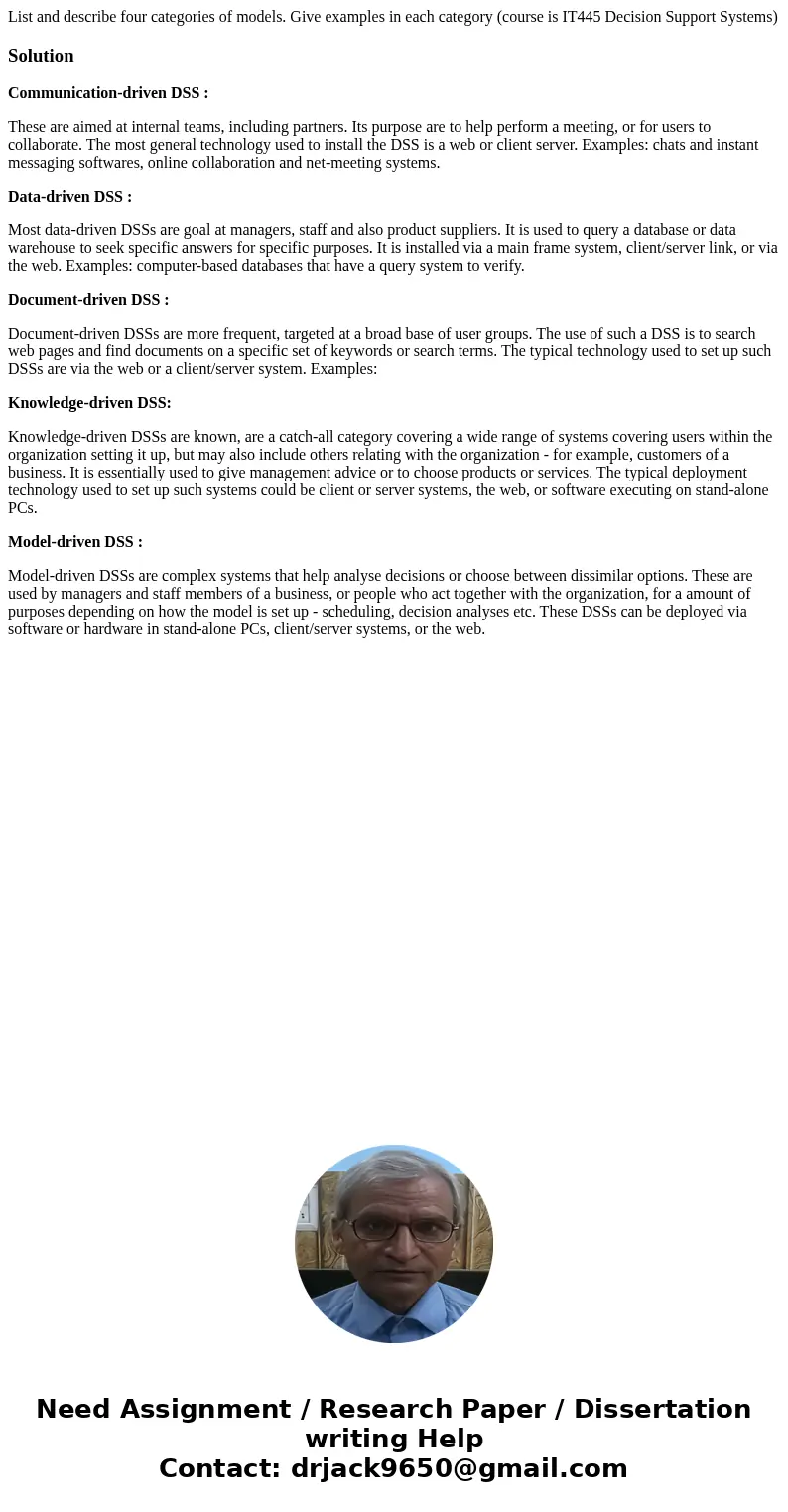List and describe four categories of models Give examples in
List and describe four categories of models. Give examples in each category (course is IT445 Decision Support Systems)
Solution
Communication-driven DSS :
These are aimed at internal teams, including partners. Its purpose are to help perform a meeting, or for users to collaborate. The most general technology used to install the DSS is a web or client server. Examples: chats and instant messaging softwares, online collaboration and net-meeting systems.
Data-driven DSS :
Most data-driven DSSs are goal at managers, staff and also product suppliers. It is used to query a database or data warehouse to seek specific answers for specific purposes. It is installed via a main frame system, client/server link, or via the web. Examples: computer-based databases that have a query system to verify.
Document-driven DSS :
Document-driven DSSs are more frequent, targeted at a broad base of user groups. The use of such a DSS is to search web pages and find documents on a specific set of keywords or search terms. The typical technology used to set up such DSSs are via the web or a client/server system. Examples:
Knowledge-driven DSS:
Knowledge-driven DSSs are known, are a catch-all category covering a wide range of systems covering users within the organization setting it up, but may also include others relating with the organization - for example, customers of a business. It is essentially used to give management advice or to choose products or services. The typical deployment technology used to set up such systems could be client or server systems, the web, or software executing on stand-alone PCs.
Model-driven DSS :
Model-driven DSSs are complex systems that help analyse decisions or choose between dissimilar options. These are used by managers and staff members of a business, or people who act together with the organization, for a amount of purposes depending on how the model is set up - scheduling, decision analyses etc. These DSSs can be deployed via software or hardware in stand-alone PCs, client/server systems, or the web.

 Homework Sourse
Homework Sourse